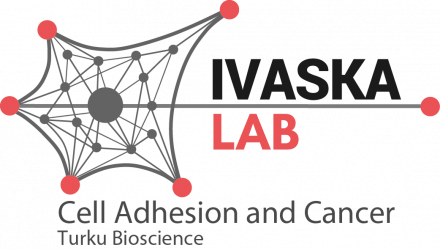SHANK3 conformation regulates direct actin binding and crosstalk with Rap1 signaling by Siiri I Salomaa et al.
Curr Biol. 2021 Nov 22;31(22):4956-4970.e9. doi: 10.1016/j.cub.2021.09.022. Epub 2021 Oct 4.
ABSTRACT
Actin-rich cellular protrusions direct versatile biological processes from cancer cell invasion to dendritic spine development. The stability, morphology, and specific biological functions of these protrusions are regulated by crosstalk between three main signaling axes: integrins, actin regulators, and small guanosine triphosphatases (GTPases). SHANK3 is a multifunctional scaffold protein, interacting with several actin-binding proteins and a well-established autism risk gene. Recently, SHANK3 was demonstrated to sequester integrin-activating small GTPases Rap1 and R-Ras to inhibit integrin activity via its Shank/ProSAP N-terminal (SPN) domain. Here, we demonstrate that, in addition to scaffolding actin regulators and actin-binding proteins, SHANK3 interacts directly with actin through its SPN domain. Molecular simulations and targeted mutagenesis of the SPN-ankyrin repeat region (ARR) interface reveal that actin binding is inhibited by an intramolecular closed conformation of SHANK3, where the adjacent ARR domain covers the actin-binding interface of the SPN domain. Actin and Rap1 compete with each other for binding to SHANK3, and mutation of SHANK3, resulting in reduced actin binding, augments inhibition of Rap1-mediated integrin activity. This dynamic crosstalk has functional implications for cell morphology and integrin activity in cancer cells. In addition, SHANK3-actin interaction regulates dendritic spine morphology in neurons and autism-linked phenotypes in vivo.
PMID:34610274 | DOI:10.1016/j.cub.2021.09.022
